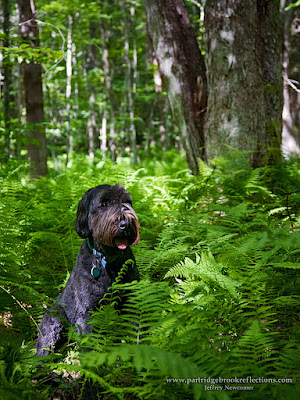 |
| Lost in the Ferns |
There is a long list of tools that a photographers can use to draw a viewer’s eye to the intended subject of a composition. Perhaps the most important is to eliminate distracting elements, but also the use of leading lines, selective focus and the impaling of the subject on one of the rule of thirds cross hairs can be effective. Lighting can also be used to draw attention to the central theme of an image and this week I want to share a quick and simple Photoshop technique that I frequently use to draw the eye, as well as to add drama and depth to an image. It's just a matter of shining a spotlight on your subject.
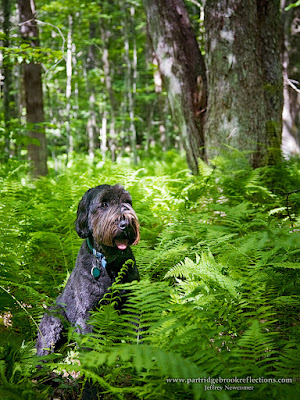 |
| Spotlighted Nellie |
My dog Nellie is a great trail dog and she loves to hide herself among the spring ferns in the forest. Although the foliage is a critical part of the story,
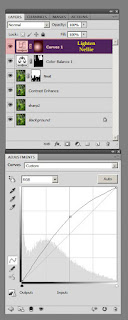 |
Spotlighted
Curve Adjustment |
I still want Nellie’s mischievous face to shine out from the jumble. I could create a careful selection of her face and then apply a curves or levels adjustment to brighten her expression, but I find that the resulting contrast is often too stark to seem natural. A simpler, and to my eye a more pleasing, approach is to again use an adjustment layer to either darken the background or lighten her face (or both) and
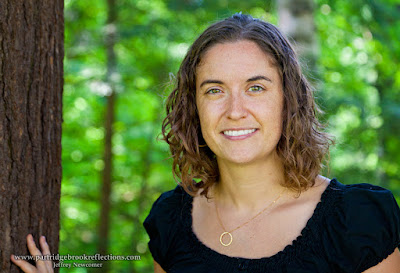 |
| My Daughter Abigail (not in the ferns) |
then apply a circular gradient on a layer mask to apply the adjustment in a more gradual way. If I am brightening the subject I will use white in the gradient tool to apply the effect. If I have darkened the image, then black will screen the subject. You simply start with the cursor on the center of your subject and then pull it outward to create the desired size and feathering. The result can be thought of as applying a soft edged spotlight to the subject. This approach can certainly be overdone, but, if applied carefully, the result is usually not consciously noticeable. The effect can best be appreciated by switching the adjustment layer on and off. Once completed, the intensity of the adjustment and its opacity can be tuned to get the desired result, and the impact can often be surprisingly significant. I frequently use this spotlighting approach in portraits to focus attention on the subject, especially when the background is unavoidably busy. It is much more controlled than if I applied vignetting to the entire image.
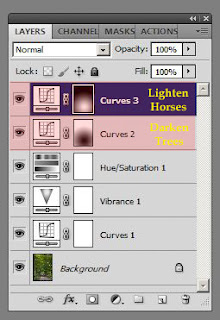 |
| Double Spotlight |
Spotlighting can also be effective in adding depth and drama to landscapes. In the picture of horses heading home to Roads End Farm, I both darkened the surrounding trees and lightened the horse to draw the eye down the road and accentuate the sense of depth. In appropriate situations this can draw out a sense of dimension from an otherwise flat image.
Spotlighting does not work in all situations, but it is such a simple technique that it is frequently worth a try. My goal is always is to draw the viewer to see and feel the scene as I did in the field, and this is just one tool that can help to achieve that vision. Give it a try. I would appreciate hearing if you find this useful.







No comments:
Post a Comment